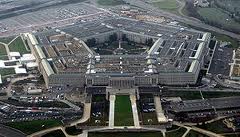Source: The Economist
20 January 2011
Let Them Chew Coca
LOOKED at in one way, Mexico’s drug warriors have cause for satisfaction. Over the past year or so its security forces have captured or killed 20 of the three dozen leaders of the cartels which dominate the business of supplying cocaine to the many Americans who like to consume it. The latest to fall was a founder of the Zetas, a particularly vicious mob, arrested this week. Until recently the drug barons could rely on tip-offs from corrupt police commanders, which is why they were able to turn parts of northern Mexico into private fiefs. Nowadays when the United States passes on real-time intelligence on the mobsters, the Mexicans–frequently marines, but sometimes even the federal police–tend to nab their man.
That counts as progress.
But it has come at a fearsome cost. Taking out the capos unleashes bloody turf wars. With over 15,000 killed, 2010 was by far the bloodiest year in Mexico since Felipe Calderon took office as president in December 2006 and launched his crackdown on the drug gangs. Officials argue that the death toll has begun to fall, that nearly all of the dead are gangsters, and that the killings are confined to a few hot spots.
But it is too early to conclude that the fall marks a turning-point. And the government’s critics point out that a worrying number of the victims have been innocent bystanders. As the violence spreads to previously calm areas, the average Mexican feels less safe. Public support for Mr Calderon’s crusade is flagging and the gains he has made may yet be lost. See our interactive map of drug-trafficking routes and “cartel” territories in Mexico
This suggests that Mr Calderon has got his priorities wrong.
Better everyday policing should have accompanied the elite anti-drug spearhead. Local forces need wholesale change, and the federal force should be both bigger and better. Related items
But even if Mr Calderon can reform the police, there is a second cost to his drug war. With their leaders under fire, the drug combines are moving into the poorer countries of Central America (see article). There, governments are even less equipped to deal with the gangs.
The politicians urgently need outside help–and this should be aimed at strengthening their police forces and courts, rather than their armies, which should not be drawn into law enforcement.
But to students of the drug wars, pyrrhic victories that merely displace the problem of the drug barons to the next country are depressingly familiar. They are the story of the past three decades in Latin America. It is no wonder that a growing number of wise heads in the region have concluded that the drug war is costlier than legalising drugs.
So have some brave souls in “consumer” countries (a distinction that has become blurred by rising drug consumption in Latin America and more synthetic drugs and cannabis cultivation in the United States, Canada and Europe). Sadly the converts tend not to include serving ministers.
An Indefensible Ban
The constraint on fresh thinking was on shameful display this week. A UN convention, reaffirmed in 2009, imposes a blanket prohibition on drugs. This includes even the traditional use of coca leaves (from which cocaine is extracted) by Andean Indians for chewing and tea. This ban has never been enforced and in 2009 Bolivia asked the UN to lift it–though not restrictions on coca cultivation for cocaine.
With a deadline of the end of this month, America has lodged an objection and Britain looks poised to follow (see article). Traditional uses of coca are not addictive and are as much part of Andean culture as a cuppa is in Britain or beer in Texas. One reason for objecting seems to be that approval might open up a wider debate about legalising drugs.
Yet the depressing news from Central America shows that this debate is long overdue.




 Creative Commons Attribution
Creative Commons Attribution